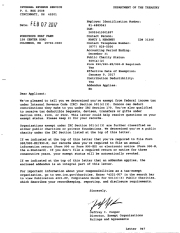Seizures
Seizures are very common in pigs. Seizures are not a disease in and of themselves. They are symptoms of an underlying condition that manifests through seizures (like sneezing can be a symptom of many things – some serious like a nasal tumor, some not at all serious like pepper up the nose).
Some underlying causes include: genetics (its in the DNA), malnutrition, head/brain trauma (some is not obvious – for example, oxygen deprivation in the birth canal causes brain trauma. And how would you know?), metabolic disease like liver shunts or diabetes (blood glucose fluctuations), parasites, toxins, organ dysfunction, hormonal imbalances, heart disease. Some of these are very significant because they can result in the death of the pig. Some of these are not life-threatening and simply need to be managed. In 75% of the cases, we never find the underlying cause of the seizure – we call these pigs epileptics.
Basic work up to find the cause of seizures includes blood work, xrays of chest and abdomen. Additional diagnostics, like MRI’s or CT scans can be done.
Many anticonvulsant medications are available for pigs, and they work very well. All medications, however, have other effects in the body and we do not usually treat the seizures unless they become very severe, very frequent, or place pig or owner in tremendous distress. It can be difficult to find the optimal dose in any individual, so we have to titrate the dose to find just the right level to control the seizures and minimize size effects. It can take up to 6 months to fully regulate a pig and find the best dose.
So, when do you have an emergency? The first seizure is always an emergency. After that, any time there are 6 seizures in a 24 hour period, 3 in a single hour, or if the violent part of the seizure lasts more than 5 minutes (time it). The seizure itself is not fatal, but the underlying cause can be. Also, if a pig gets locked into a violent seizure, his body temperature can rise to 110 or higher, causing malignant hyperthermia and death. If any of these occur, you should seek a vet right away.
What do do when your pig has a seizure? Time it. Keep a calendar of seizures so you can tell how frequent they are. Record what the pig is doing before the seizure – this may be a trigger to cause the seizure, and if you eliminate the behavior, you may be able to stop the seizure without medications.
Never hold you pig on its back like a baby – it cannot control its swallowing and breathing muscles and may aspirate saliva. Pigs may salivate, defecate and urinate while having a seizure. They cannot help it. Lay your pig on its side so the saliva can run out of its mouth rather than down its throat. If you must transport during a seizure, keep the pig on its side and keep the mouth down. You can place it in the bottom of a kennel or on a blanket to use as a gurney to keep it on its side.
Seizures have 3 phases – each lasting as little as 3 seconds, some lasting up to 3 days. A pre-seizure phase called pre-ictal phase. The pig knows it is coming and has strange behavior. You may notice this and may be able to prevent a seizure by adjusting medication. The seizure (ictal phase) – convulsions of various severity will occur. The post-ictal phase – think of it like rebooting the brain computer. It can take 3 sec or 3 days – pigs will be sleepy, they may act blind, they may not respond to stimuli easily. It is best to leave them mostly alone during this phase, but have them in a quiet safe place.
Reprinted with permission. ©Anita Jacobson, Just Mini Pigs FB Group






